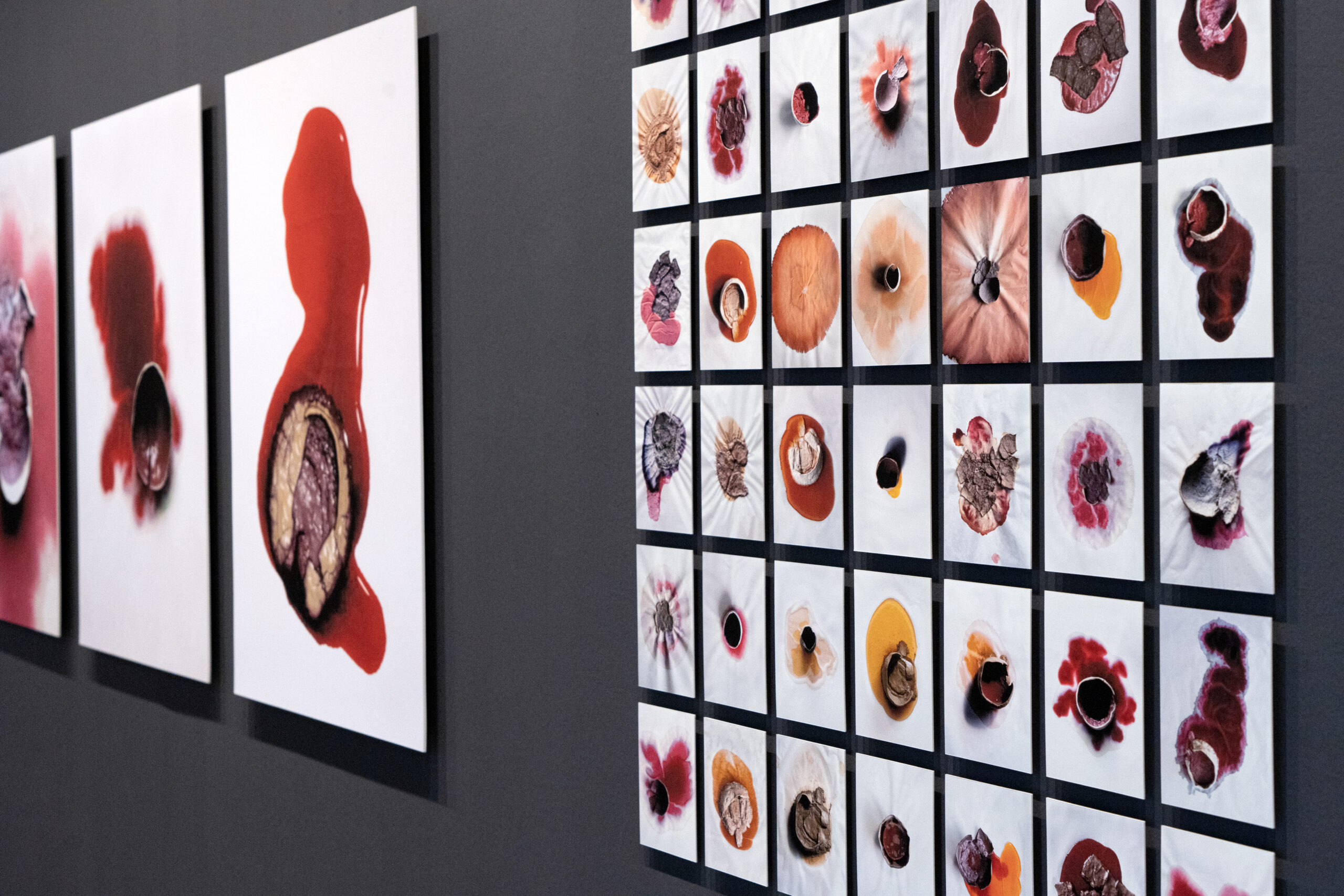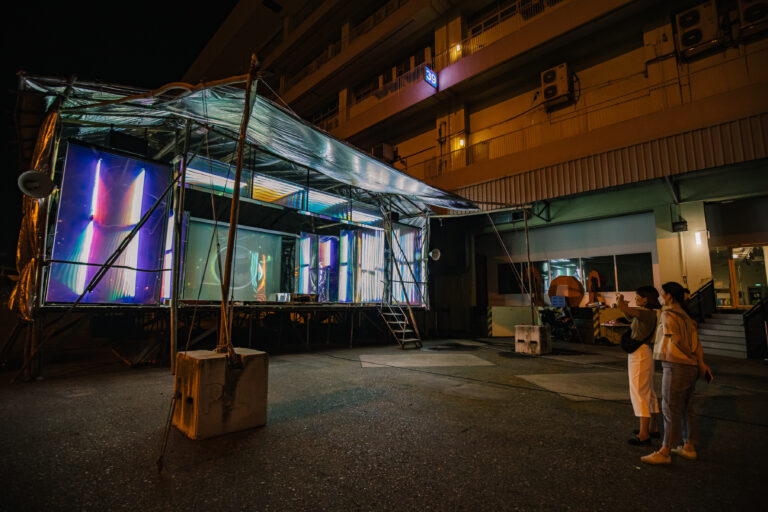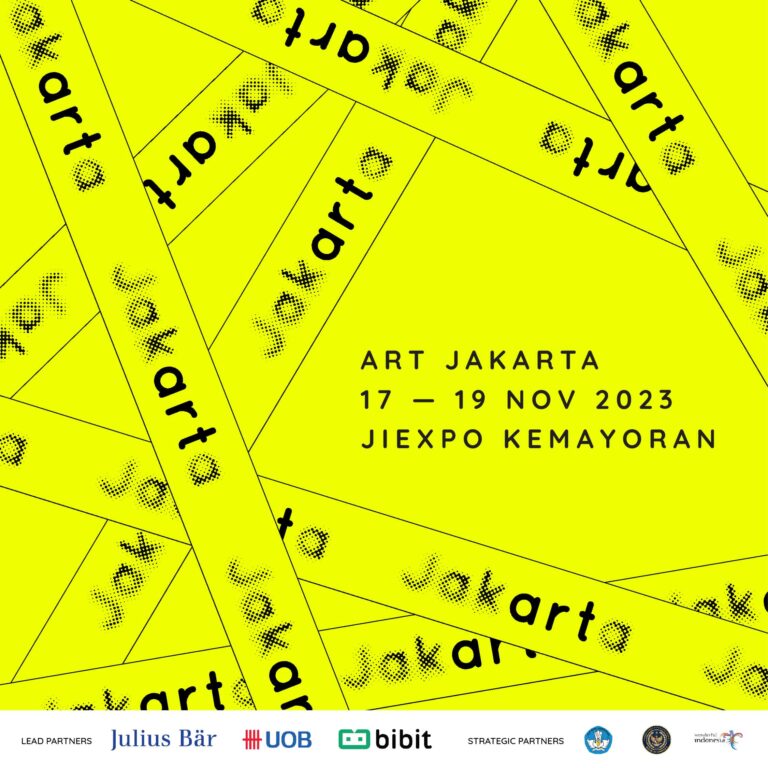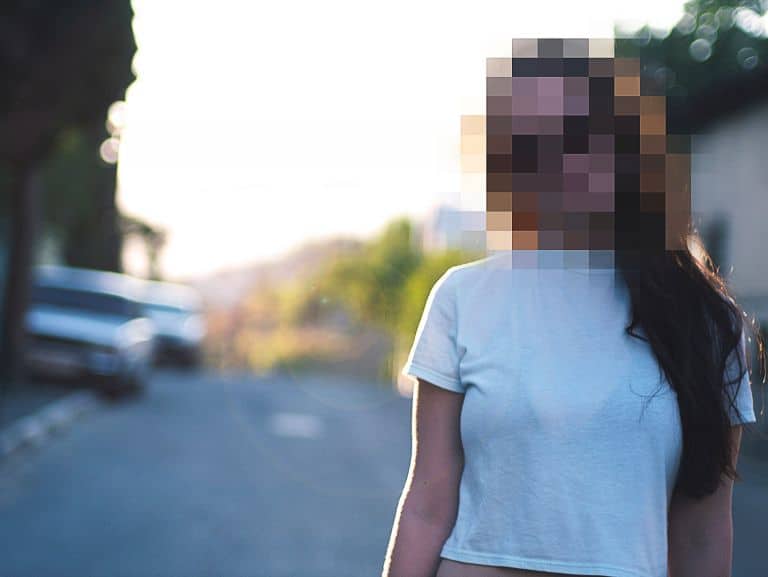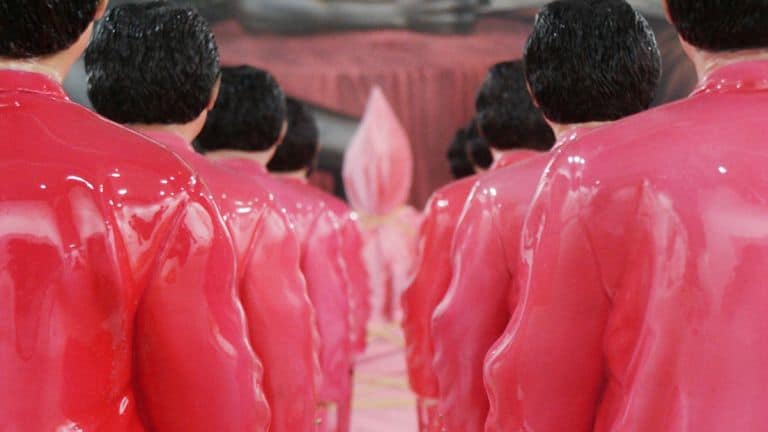In the poem ‘Sunrise’, celebrated American poet Louise Glück writes,
“And if you missed a day, there was always the next,
and if you missed a year, it didn’t matter,
the hills weren’t going anywhere[…]”
From seasons to journal entries, humans have always tried to make sense of the passage of time and to immortalise events that have come before. And it was this sense of the purposeful embracing of time that struck me as I checked out Xinwei Che’s solo Holding Time《实 · 空》that’s currently ongoing at the Esplanade.
Born in Singapore and currently based in Canada, Che attempts to measure, hold, and be one with this slippery, unavoidable aspect of life as she explores “the rhythms of material movements to expand time.”
It’s a bright Saturday morning when I head up the escalators to the Esplanade’s Community Wall on Level 3, where I’m first faced by a series of large framed works, bearing massive beige circles. Seemingly random splotches of tawny and taupe mottled the circles, while patches of cream stood out at the centres. At first glance, the works took me back to secondary school biology classes, where I had to examine squirming, enigmatic-looking animal cells through a dim microscope.
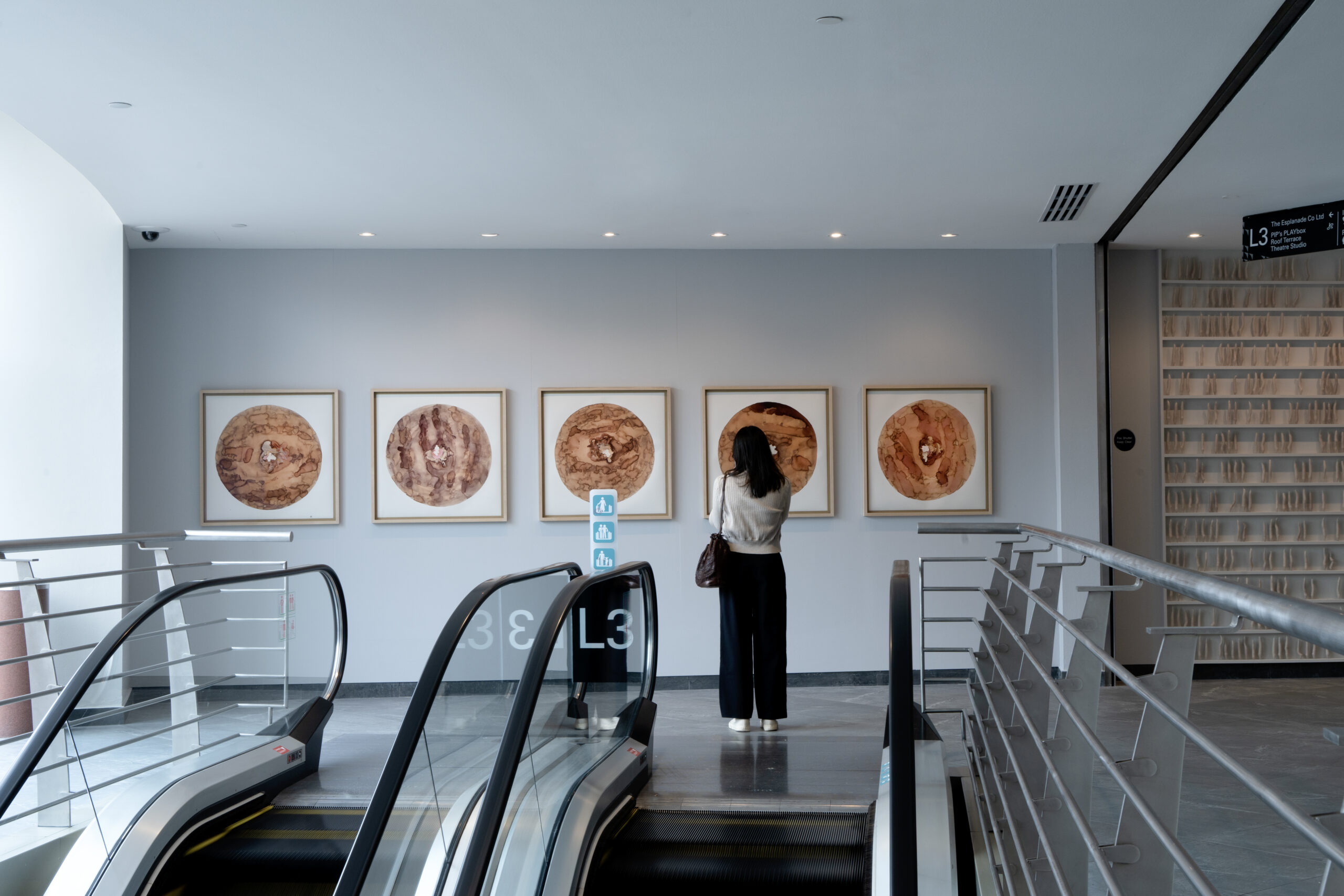
I arrive just in time to meet Che, meaning that—thankfully—I didn’t have to decipher these images on my own. The series, titled Time Wells《时纹》, is one of the three works on show that reflects Che’s explorations into “being in time”; or essentially, what it means to truly inhabit time in a world that is quick to commodify every moment of our existence.
The ancient medium of clay
In contrast to the more superficial capitalist forces that govern our day-to-day lives, Che’s favoured medium is solid and earthy clay. Hailing from deep beneath the earth where it existed as particles for millions of years without human interference, Che views the flexible medium as one that can embody “the deep time held within geological cycles.”
Taking this even further, she states that while technical ceramic handbooks often introduce the geology of clay materials, some practitioners gloss over such information while trying to find the perfect recipes for clay bodies. She explains,
“But if we really consider the fact that we are wedging, rolling and building with clay that formed slowly over millions of years, we become aware of the deep time we are holding in our hands.”
I’ll admit that this can all sound abstract pretty quickly, but Che’s sentiments become clear with the series Gathering Space《凝散》. It’s a series of prints on cotton rag paper featuring abstract pools of colour beneath what looked like shattered ceramics.
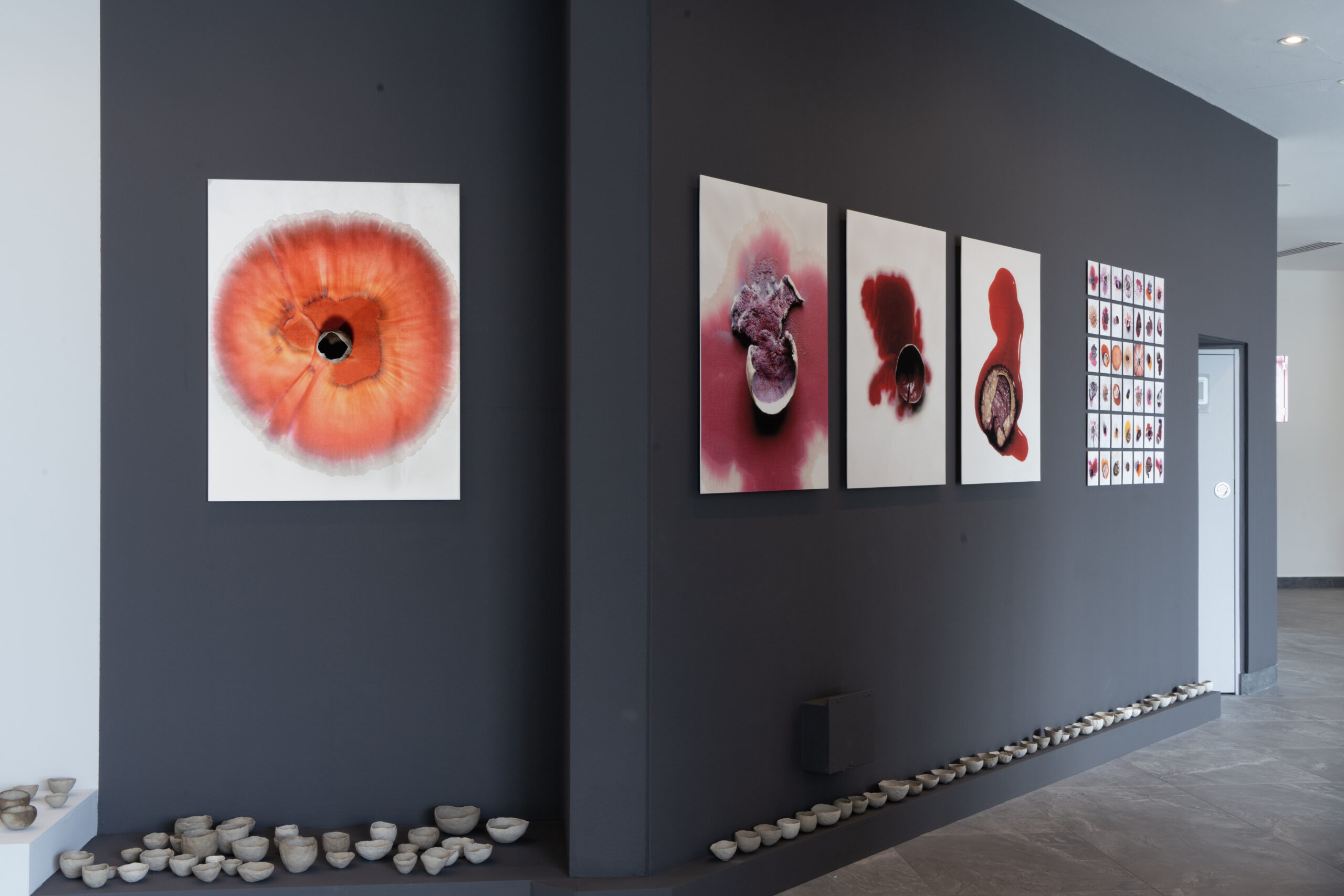
I couldn’t tear my eyes away from the images, bearing sheer riots of unbridled colour and texture. Visceral puddles of crimson, burnt orange and amber bled through the paper, creating wet creases that have since dried. On top of the pools were ceramics of all forms: some were uniformly shaped bowls while others were falling apart, evoking the mystery of dilapidated castle ruins.
These were the results of Che placing pigments from traditional Chinese medicine (TCM)—of which her mother is a practitioner—into hand-pinched, unfired vessels that are unable to contain the pigments indefinitely. The pigments would seep out from the objects, creating blooms of vivid colour and eroding the vessels’ forms in unexpected and sometimes violent ways.
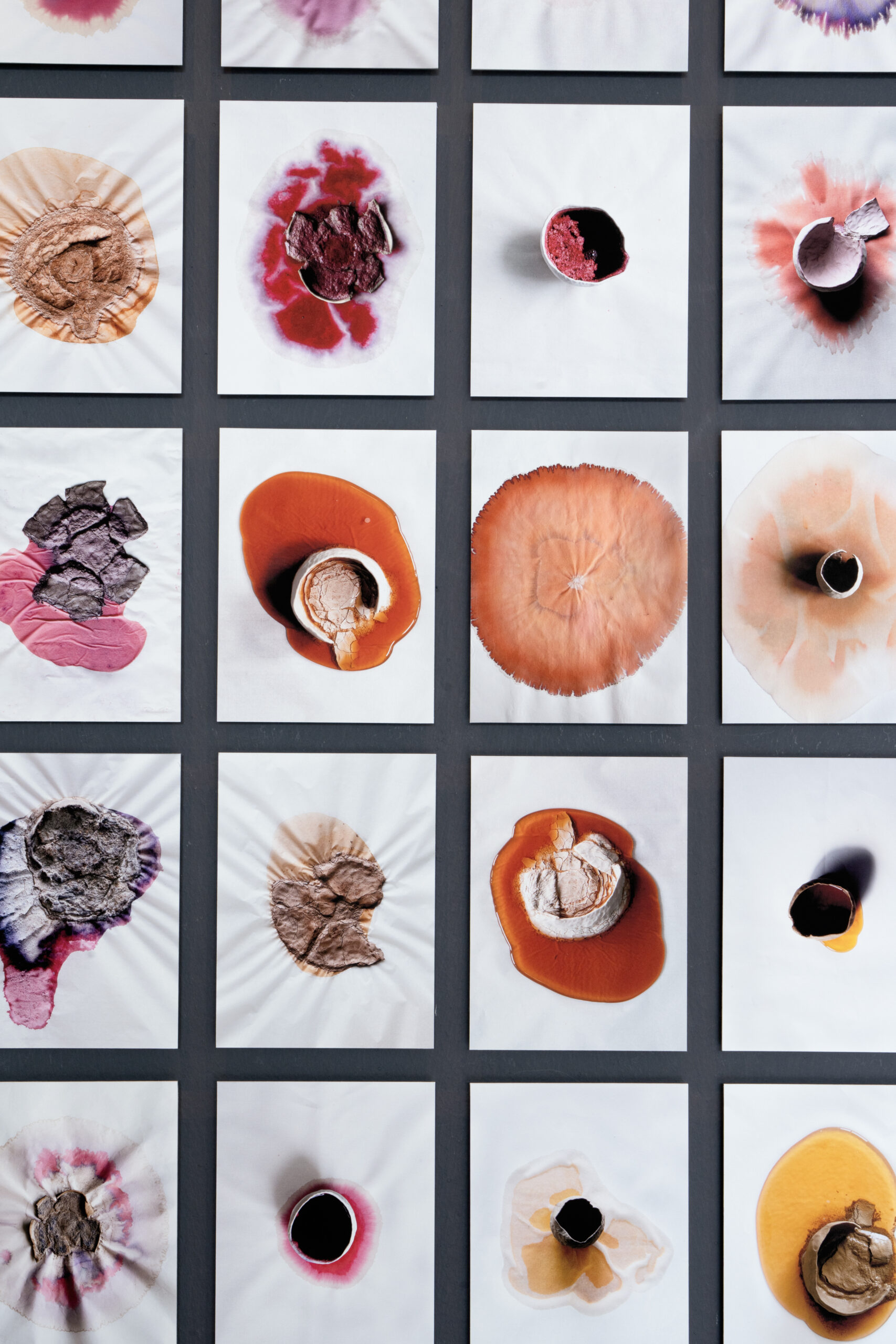
By physically shaping the vessels, constantly filling them, and letting them empty themselves, the work is “a space for [her] to reflect on what it means to hold time and what it means to let this time go.”
Admittedly, it’s a mercurial process but one that brings Che great joy—a far cry from how some artists might hold themselves to perfectionist standards when creating work. On this, she says,
“This unpredictability actually pleases me greatly. I really enjoy that I cannot control how a vessel collapses. If it’s particularly beautiful, I take a few photos and observe closely, but that’s it. It will change again as it dries, and I am never able to recreate a particular image even with the exact same clay and herbs.”
Relationships with the earth and time
The hand-pinching of clay takes centre stage in Che’s video work Laying Ground 《土浦》, which plays on a screen opposite Gathering Space《凝散》. The two-channel video work (so that’s two screens playing the work side by side) runs for 46 minutes.
Stick around to watch Che mould, shape, and care for a strip of unfired clay inside the Emily Carr University of Art & Design in Vancouver, where she pursued her MFA. Honestly, it’s bizarre to watch the artist hunch over the floor and meticulously attend to the medium indoors while people make their way through corridors, occasionally stopping to stare bewilderedly.
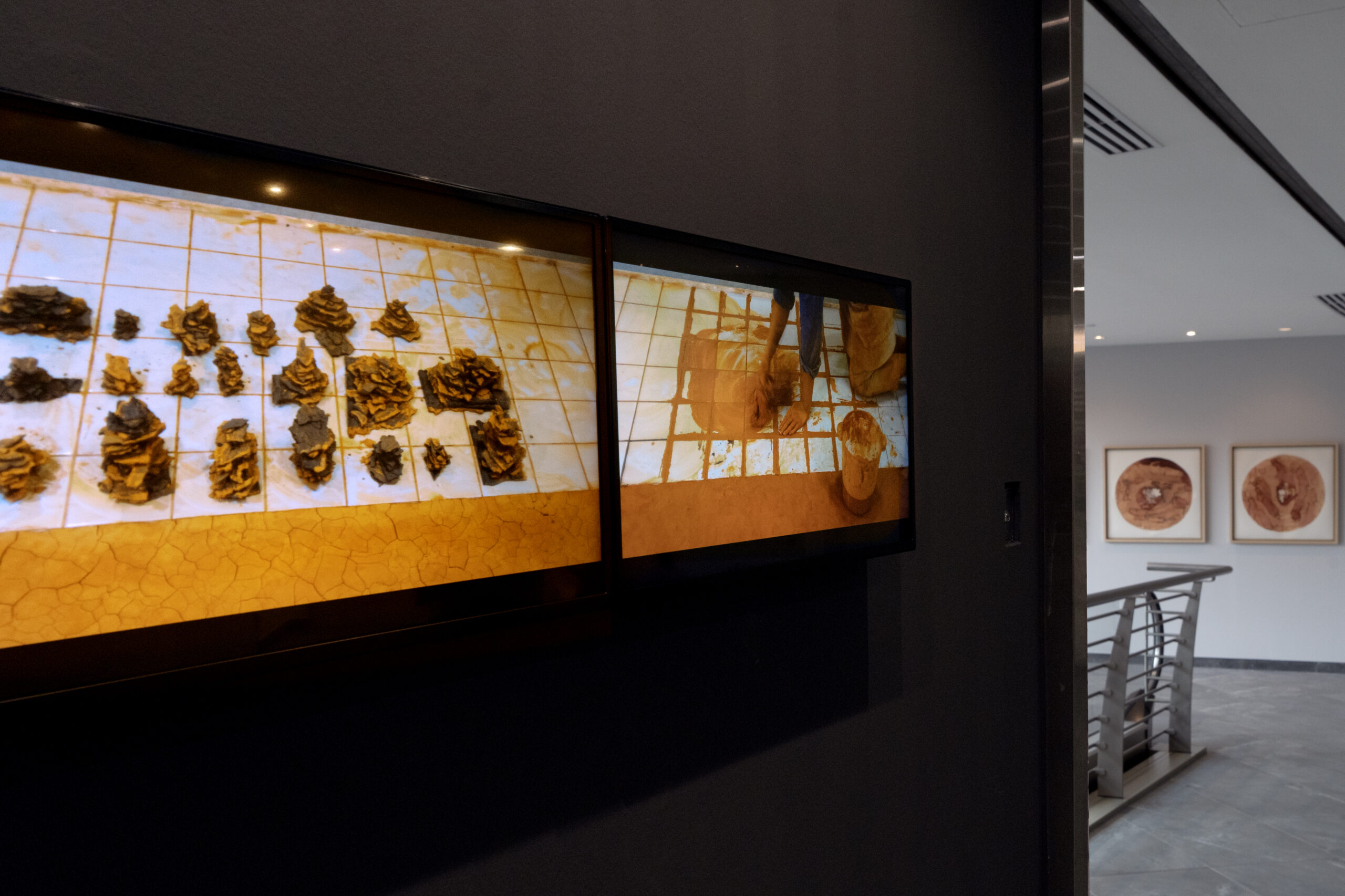
Working indoors was particularly important to Che, stating that “in urban cities, the earth is often covered by a skin of asphalt and concrete… I wanted to create a performance indoors that also worked with the ground and with clay minerals.”
Adding to this sentiment was the fact that the city of Vancouver was in the process of digging an enormous hole in the ground for the Broadway Subway project when she organised the performance in September 2021—an excavation that she describes as one being “governed by capitalist benchmarks of efficiency.”
Visitors’ responses to Che’s performance were intriguing. Some stopped to ask Che what she was doing and how long the work would remain installed after she completed it, prompting her to realise that the visitors didn’t clock what she was doing as ‘Art’.
“I appeared to be working, not performing, and this made many passersby wonder what exactly I was accomplishing,” she recalls.
“This was very exciting to me because if my performance was immediately recognisable as “Art”, then perhaps the answer would simply be: she’s making Art.”
After acquainting myself with Che’s penchant for using slow, purposeful movements to unravel the experiences of time, the initial series of works Time Wells《时纹》—which once looked like alien biological specimens—started to make sense.
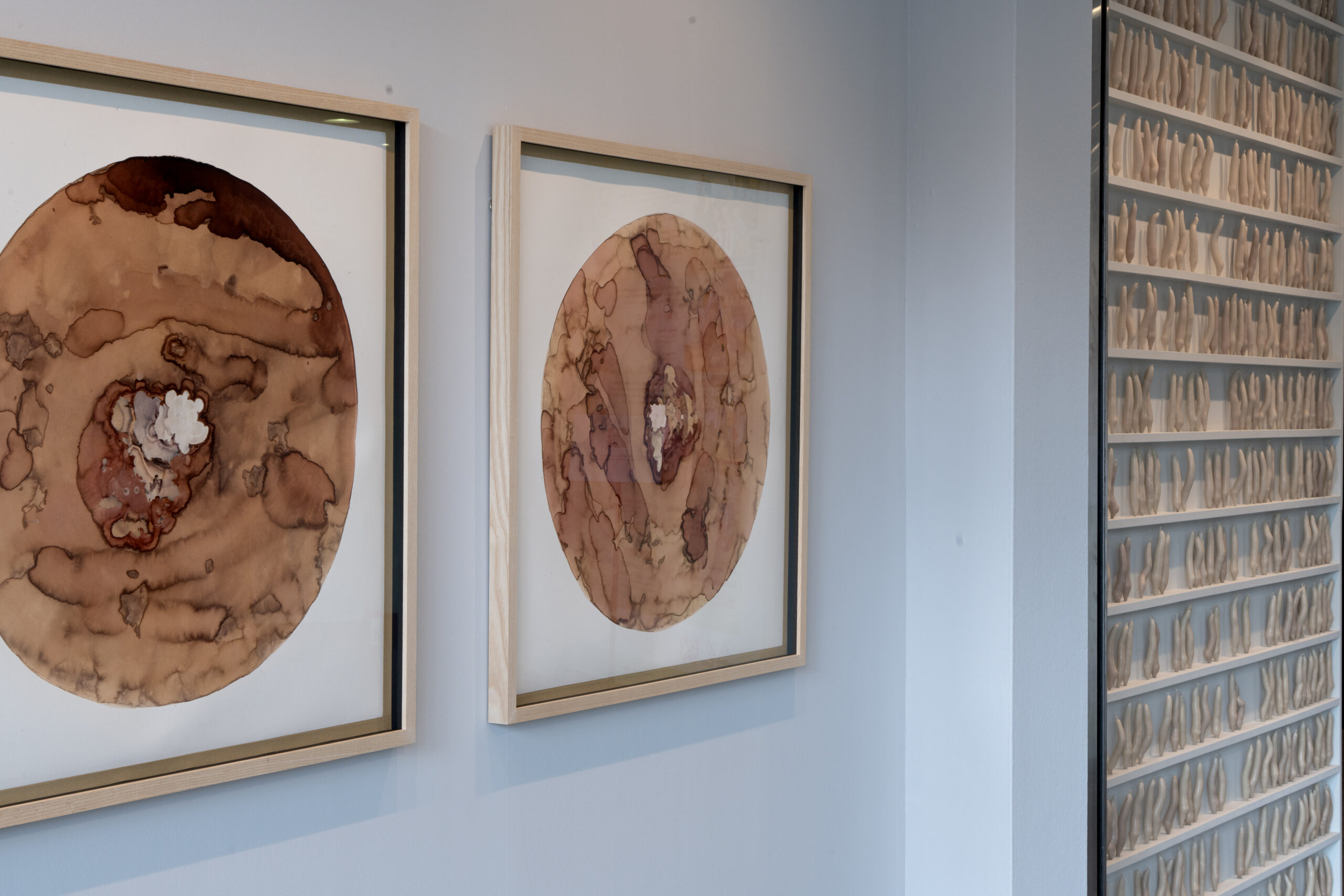
What you see is the product of a performance work that unfolded over forty hours across five days. The artist worked in a room boasting nine empty squares on the ground and a wall full of beeswax candles. She started each day by placing candles on the squares and lighting them. The rest of the day saw her light new candles with those that had already been lit. Whenever a candle melted away, Che would place a layer of TCM pigments on top of it to record the shape of the melted wax, resulting in “stain paintings” that poetically recall tree rings.
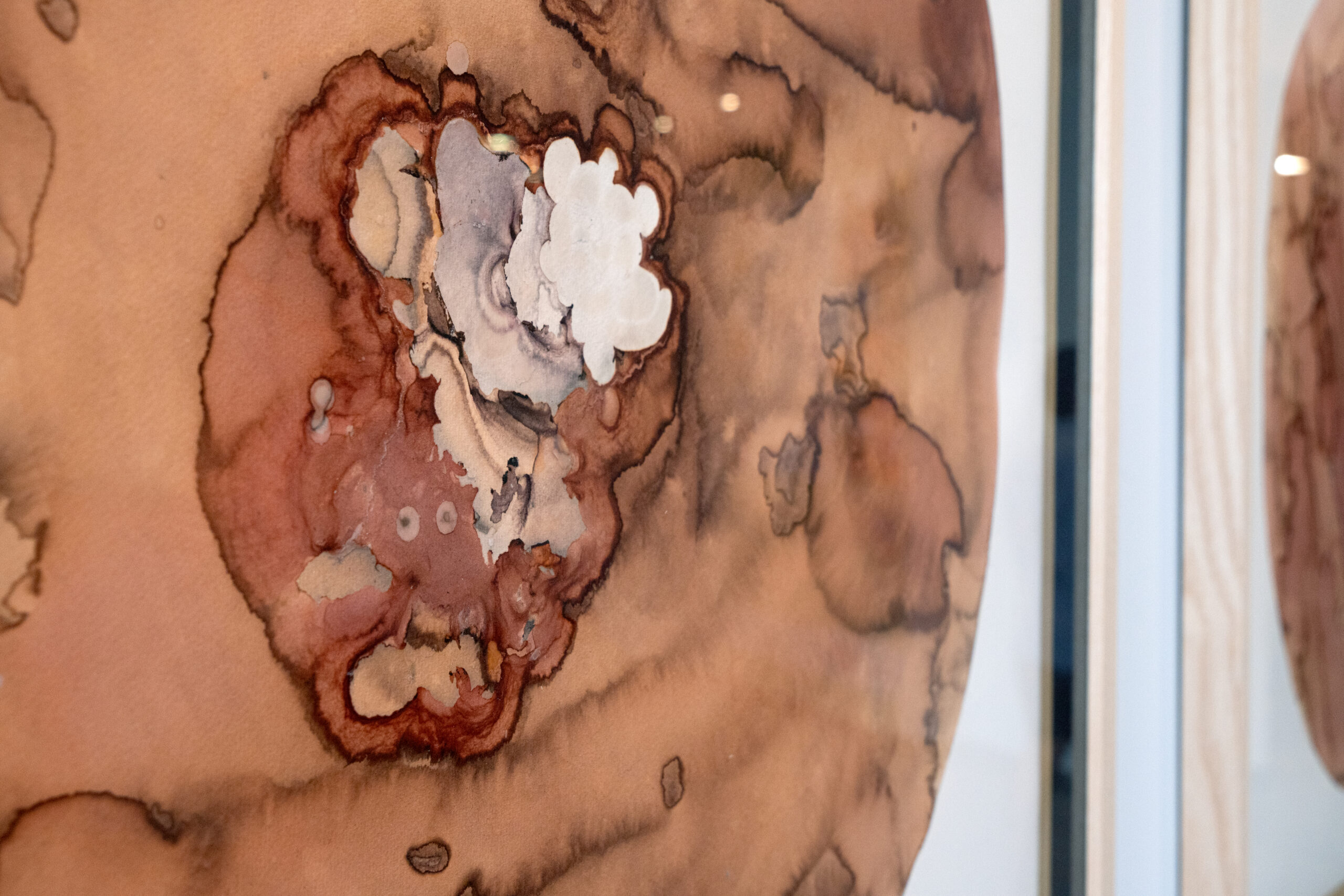
Once again, Che performed the work in front of viewers, placing seats beside the candles. She recalled the silence that filled the room as she worked, saying,
“In these durations, my viewer and I simply sat together in silence. This experience was powerful because it felt as though we were brushing on the texture of time. Unbound from daily to-do lists, freed from the need to present ourselves or express ourselves to each other, I sometimes felt time stretch and expand as we shared the silence.”
What we hold onto
To be honest, It only felt like I understood Che’s practice after meeting her in person, having email conversations, and penning this entire review.
But that isn’t a bad thing: I strongly believe that artworks don’t owe it to you to reveal themselves immediately. That it’s rewarding to give them more than a mere glance and let their impressions ferment in your mind over days, and in my case, even weeks.
As abstract as the show’s premise may sound, there are a few sentimental touches in Che’s practice that ground the show in a lived experience rather than an out-of-reach idea. Details like how Che purposefully chose to work with TCM herbs as an ode to her mother feel intimate and personal.
Additionally, Che’s choice to give her works Mandarin names references her fluency in the language—despite the fact that she had never spoken about her practice in Mandarin prior to a residency at Taipei Artist Village in 2021. This stemmed from her realisation that it was much easier for her to convey complex concepts about time and being with Mandarin characters, as Mandarin characters are able to take on another layer of meaning when they share the same pronunciation with other characters.
As a constant over-thinker who keeps a near-daily journal, I walked away trying to process a lot of food for thought on how I might perceive, experience, and track time.
We certainly can’t command the flow of time, but perhaps the most important thing for us to do is attempt to regain control of how we experience it, through purposeful actions and reflections.
____________________________________
Holding Time《实 · 空》runs at the Esplanade until 7 May 2023. Click here for more details.
Click here to learn more about the artist.
